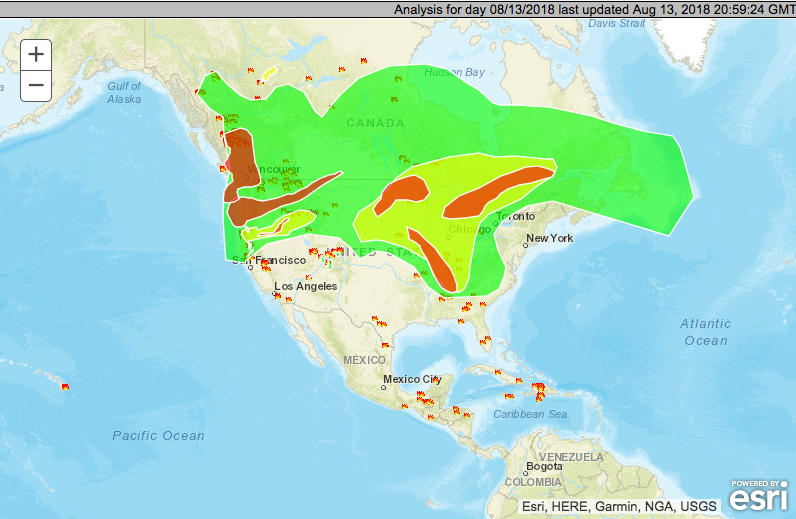|
With fires raging in multiple western states and in Canada, there is this assumption that there is a single cause for these large, hot wildfires that, in some cases, are creating their own weather. There is a tendency by different media outlets and political figures to say it’s climate change, or fire suppression has created a fuels problem, or if people just didn’t build houses in the forest there wouldn’t be a problem. The basic fact of the matter is this:
Now, I’ll unpack these three things. Climate Change Climate change influences wildfire in several ways. When vegetation is wet, it takes way more energy to get it to burn because essentially all of the water has to boil off before the vegetation will burn. This is why you don’t use wet wood to make a camp fire. As the air temperature goes up due to climate change, snow in the mountains melts out earlier in the year and increases the length of the fire season. Once the snow is gone, higher temperatures continue to make vegetation more flammable by drying it out. High air temperature means the more water is evaporating from the soil and dead vegetation and that live plants are using more water (transpiration) to photosynthesize. Human-caused climate change is responsible for approximately half of the fuel drying in the western US. So now we’ve got high temperatures making vegetation available to burn for a longer part of the year and making it more flammable by drying it out. But wait, there’s more… The other climate change effect is that nighttime temperatures are remaining high. This is important for fire behavior and firefighting. When the temperature drops at night and the relative humidity increases, fire behavior tends to calm down. This is typically when much progress is made by wildland firefighters in containing the fire. With high nighttime temperatures, we are now seeing fires spread faster at night. Fuels There are some forests that used to burn every few years to decades before we started putting fires out. This has increased fuels in these forest types and in some cases harvesting smaller trees to reduce the chance that fire burns through the forest canopy will reduce the chance of a large, hot fire. However, we also have to return more frequent fires to these forest types. If all we do is cut down smaller trees, we’re putting a band-aid on the situation because fuels will just build back up. There are other forest types, like lodgepole pine forests, that are supposed to burn infrequently and when they do, they burn hot. The 1988 Yellowstone fires are a classic example. When these forests burn every 100-300 years, that is natural. Fire suppression has not drastically altered these forests and thinning to reduce the chance of a large, hot wildfire is not appropriate. Humans Human behavior creates three main problems when it comes to wildfire. The first is that humans cause many wildfires. We have increased the number of ignitions and because of the timing of the ignitions, increased the length of the fire season. The second problem that we’ve created is that we like to build houses in flammable environments and don’t take responsibility for managing the risks around our properties by building with non-flammable material and maintaining a fuel buffer around our homes and communities. This map shows where the wildland urban interface is located in the continental US. We like to live in beautiful places and that puts us at risk. The third problem is that we don’t want to have a bunch of smoke in the air from fires. Now, that’s like buying a house next to a freeway and getting pissed off when you hear traffic noise. Estimates of area burned in California before the 1800s suggest most of the state is quite flammable. If 6,900 square miles were burning each year, California was probably a pretty smokey place. For comparison, there are roughly 1015 square miles burning in California today (8/13/2018) and the smoke analysis looks like this: The basic facts of the matter is that we are facing a challenge that we have created through human-caused climate change, fire suppression, and not thinking through our actions. Any solution that we develop will require addressing all three of these factors if it is going to be successful.
0 Comments
Your comment will be posted after it is approved.
Leave a Reply. |
Details
Archives
October 2023
Categories
All
|


 RSS Feed
RSS Feed